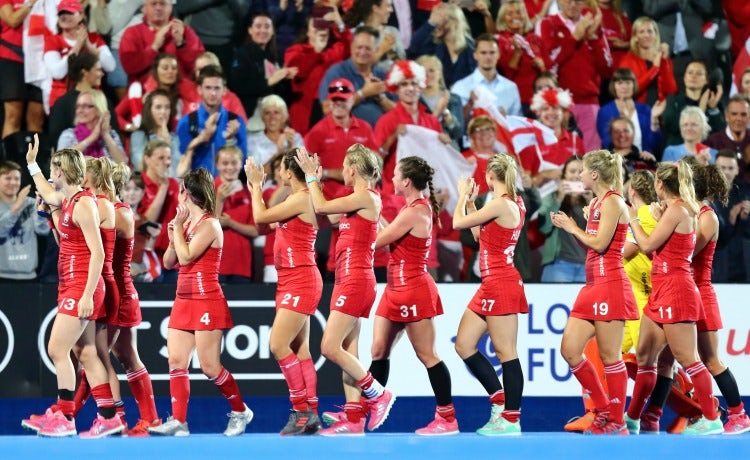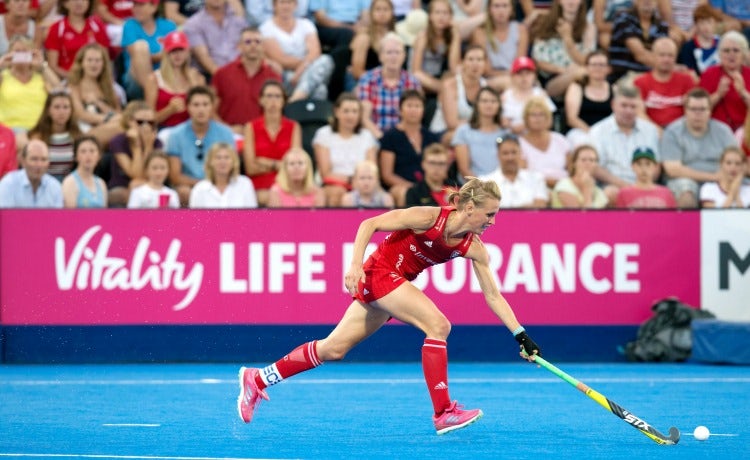Presented On US Sports Net By US Sports Marketing
With numerous high profile events on the way over the next year, new data reveals a tangible – and gender balanced – interest in women’s sport across the UK (and the World). So why are brands still hesitating to get involved?

2018 has been an exciting year for women’s sport. The SSE Women’s FA Cup Final in May between London rivals Chelsea and Arsenal attracted a record crowd of 45,423 to Wembley Stadium, 10,000 more fans than attended the final in 2017.
The Women's National Football Conference Kicks Off 2019! Get On Board Today!
With the Women’s Football World Cup in France on the horizon in June 2019, the allocation of 5,000 tickets for the qualification game between Wales and England on 31 August sold out in 24 hours. The Football Association says it is now on course to double the number of players and fans in the women’s game by 2020.
Furthermore, the RFU hopes to make English women’s rugby professional this season for both the 15-a-side squad and sevens, while in July Scottish Rugby more than doubled its number of contracted female players to eight.
With the Women’s Hockey World Cup (21 July- 5 August) currently taking place in London, the Netball World Cup coming to Liverpool in July 2019 and the Women’s Football World Cup next year, there are many opportunities on the horizon for brands to get involved with women’s sport, yet hesitation remains on the part of CMOs.
“There’s still a perception that the market’s relatively immature or it’s one that they don’t know terribly well so the sense of risk seems a little high,” explains Jo Bostock, co-founder and joint CEO of the Women’s Sport Trust (WST).
“The big thing we picked up on when we were sounding out CMOs is that there isn’t enough data to support the claims that women’s sport is making about itself.”
To help build the business case, the WST has partnered with Nielsen Sports and England Hockey to highlight the value of women’s sport based on data.
According to the analysis, 59% of the UK population are interested in at least one women’s sport. This breaks down to 87% interested in both men’s and women’s athletics, tennis (83%), cycling (72%), hockey (71%), golf (57%), football (38%) and rugby union (36%).
Looking at women’s sport alone, 21% of the UK are interested in women’s football, 16% in women’s rugby and 16% in women’s cricket. Awareness is also building, as 64% of the UK reported knowing about the Women’s Football World Cup, while 42% were aware of the Women’s Rugby World Cup.
Lynsey Douglas, global leader for women’s sport at Nielsen Sport, sees real commercial opportunities for the whole industry, from rights holders to brands to broadcasters. In ROI terms, she argues that now is a good time for brands to get involved with women’s sport, as the costs are likely to rise.
The opportunities in sponsoring less mainstream sports
The Nielsen data shows that around 10% of the UK population follow women’s hockey. Jonathan Cockcroft, commercial director of England Hockey, reports that interest – both from brands and supporters – has surged since the team’s gold at the Rio Olympics in 2016.
Ticket sales for the Women’s Hockey World Cup have exceeded expectations, with England Hockey receiving 120,000 applications for tickets and England matches oversubscribed by 40,000.
The likes of Vitality, Merchant Gourmet, Jaffa oranges and Toshiba have all become sponsors alongside long-term partner Investec. However, Cockcroft believes brands in general are still cautious about partnering with women’s sport.
“There aren’t enough marketing directors and CMOs out there that have the imagination, the bravery and the gut instincts to go for something that’s slightly less mainstream,” he states.
“Also there are not enough agencies that are prepared to put some of the more non-mainstream properties in front of the big brands.”
Attitudes over the viewership of women’s sport could be affecting the way brands approach potential sponsorship opportunities, with the misconception being that only women or girls take an interest.
The Nielsen statistics show that of the 59% who are interested in at least one women’s sport, 51% are female and 49% male. This is compared to the overall sports fan, which skews as 65% male versus 35% female. According to the data, people aged 16-24 are most likely to like women’s sports.
“It’s very gender balanced and it’s absolutely not just women and girls who are interested in women’s sport,” Douglas explains. “What comes through a lot in the data is that sport is sport and fans will consume it, it doesn’t matter necessarily who is playing.”
The research also shows that consumers see women’s sport as competitive (48%), skilled (41%), inspiring (36%), successful (33%), progressive (30%) and clean (21%), while only 8% would describe sportswomen as money driven compared to 39% for sportsmen.
Brands blazing a trail
The number of women’s sport sponsorship deals increased by 47% between 2013 and 2017, with the average deal size rising by 38% during this period, according to Nielsen.
Brands like SSE with the Women’s FA Cup, O2 through its sponsorship of England Rugby’s Red Roses and Tyrells with is support of the Premier 15s women’s rugby premiership, have all blazed a trail in women’s sport.

Another brand is financial services company Investec, which signed on as the sponsor of women’s hockey in 2011. Cockcroft explains that at the time England Hockey was relatively commercially immature and the partnership required a big leap of faith, although as hockey is a “challenger brand” it could be more open to innovative thinking than an established sport.
The Investec partnership had a “transformational” effect on women’s hockey, says Cockcroft, who credits the brand with having made the sport look “commercially serious.”
“Off the back of the work we’ve done with them I’ve no doubt it’s made us it easier for us to build our sponsorship programme with other brands,” he adds.
One such brand is Vitality, which came on board at the end of last year as headline sponsor of the Women’s Hockey World Cup, the official wellness partner of England Hockey and sponsor of the grassroots Back to Hockey programme.
Nick Read, Vitality commercial director, believes brands should be braver and bolder, and think about how they are going to make a difference with their investment in sport. He also recognises that the nature of sponsorship has changed and is no longer about “slapping a logo” on a sport and hoping for the best.
Vitality was interested in a long-term partnership that was synonymous with its brand purpose to make its members healthier. That means as well as driving brand awareness, the sponsorship aims to engage members grassroots initiatives like Back to Hockey.

With sports that traditionally lack investment, it is important for brands to work with the governing bodies to experiment with new formats and look at ROI in a completely different way, says Read.
“We don’t get into these partnerships lightly. There’s a lot of deliberation, but we want to make a difference over a longitudinal period of time,” he states.
“It’s not just about doing a one-year deal and then pulling out, it’s about making a difference and measuring the impact that our pound is having at a community and social level. We want to be seeing that we are truly making a difference.”
Broadcasters get behind women’s sport
The Nielsen data shows that 40% of the UK population would consider watching a women’s sport live, while 42% would watch more if it was accessible on free TV and 37% would watch if it were free online.
The broadcasters are starting to realise the opportunity. In November last year, the BBC committed to streaming 1,000 extra hours of live sport online every year, including live Women’s Super League (WSL) football for the first time.
Women’s sport is also gaining more prominence in broadcasters’ advertising. On 31 July, BT Sport released its #TakeThemAllOn advert featuring avid football fan Charlotte who, on her way to school, nutmegs Tottenham Hotspur’s Dele Alli and brings down Welsh rugby star Sam Warburton.
BT Sport has also signed a four-year deal with the International Hockey Federation (FIH) to broadcast all major World Cup and Pro League matches. Cockcroft describes BT Sport’s coverage of the current Women’s Hockey World Cup as “absolutely critical” in raising the profile of the sport.
“The reality is that terrestrial TV companies aren’t queuing up to spend the sorts of money that BT have done on the production,” he explains.
Meanwhile, Sky Sports has gone all in with its coverage of women’s netball, building the audience rather than waiting for one to emerge. In May, the broadcaster also teamed up with the WST on #ShowUp, a campaign encouraging Britain to support women’s sport by watching, attending or playing. The hashtag generated 92 million impressions across social in the first week alone.
However, it is important to find consistency between showpiece events, as the revved-up audience appetites tend to die away once the tournament ends.
This could mean exploring new formats. Next year England Hockey will be involved in the launch of a new season long hockey competition, known as the Pro League. Nine international men’s teams and nine women’s teams will play in two global leagues between January and June ending in a grand final.
This is equivalent to more than 150 international hockey matches being played around the world in a six-month window, offering brands a greater opportunity to engage with the sport.
Taking action
When approaching women’s sport brands need to think longer term and decide which sport is the best fit for them not just in year one, but years three to five, says Nielsen’s Lynsey Douglas. It is from this point that they should then define which metrics matter.
“Potentially brands could get into women’s sport for quite a low rights fee, but it’s all about how they activate it and use it within their own marketing,” says Douglas.
Bostock advises brands to define how they want to be perceived before engaging with women’s sport. She suggests that some brands might see the opportunity to incubate a smaller sport like short track speed skating and be the ones to get the next Elise Christie across the line.
The long-term view is important. Cockcroft argues that if a brand was launching a new product they would think about how the upfront investment would deliver over a longer period, which is the mentality they need to apply to women’s sport.
However, one of the biggest challenges is that agencies do not facilitate face-to-face discussions between brands and governing bodies or rights holders quickly enough and therefore a lot can get lost in translation, he adds.
“We can create things that really do deliver against a brand’s needs, we just need to have that clear brief and then have a really imaginative conversation about what we can do differently to bring that to life.”


No comments:
Post a Comment